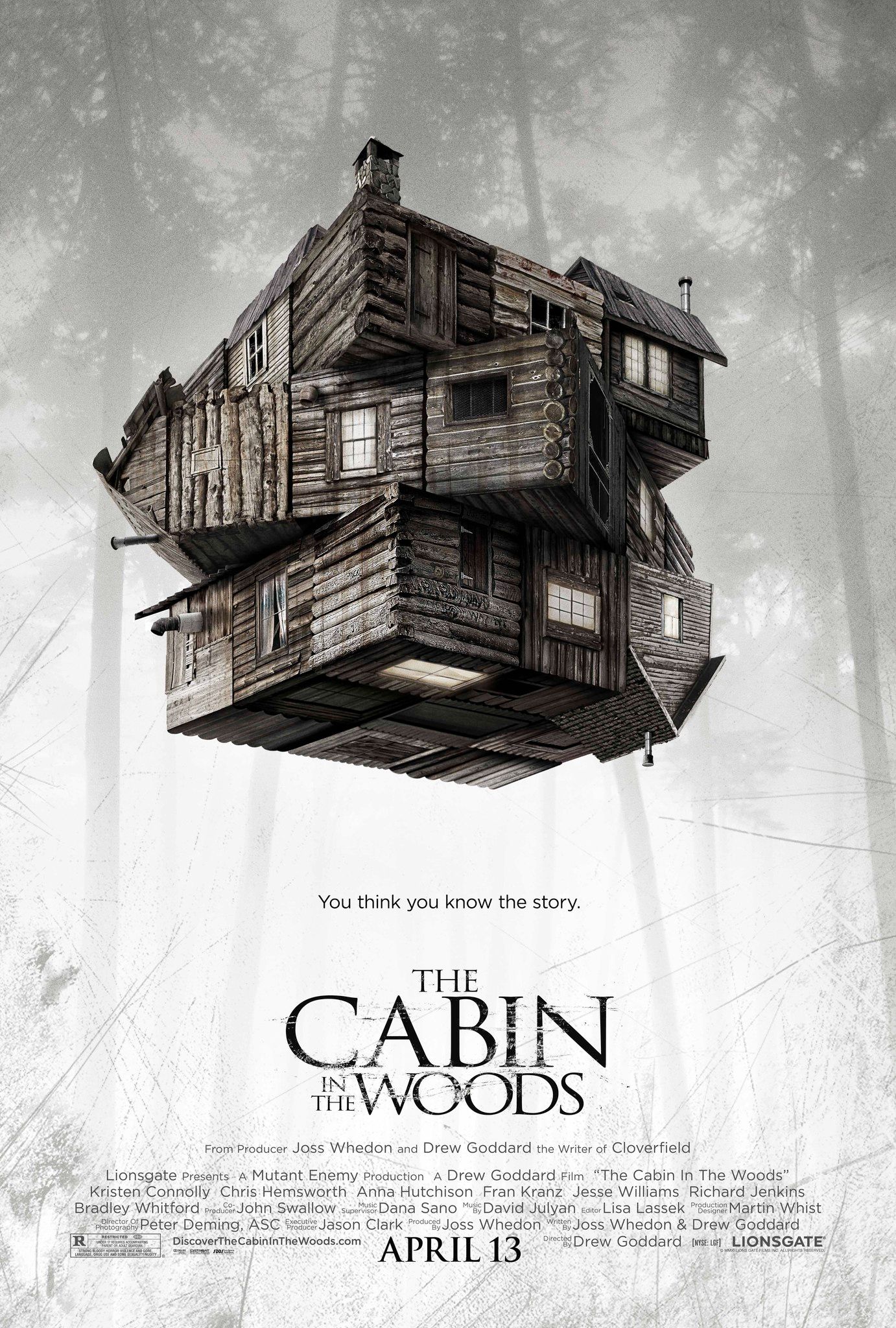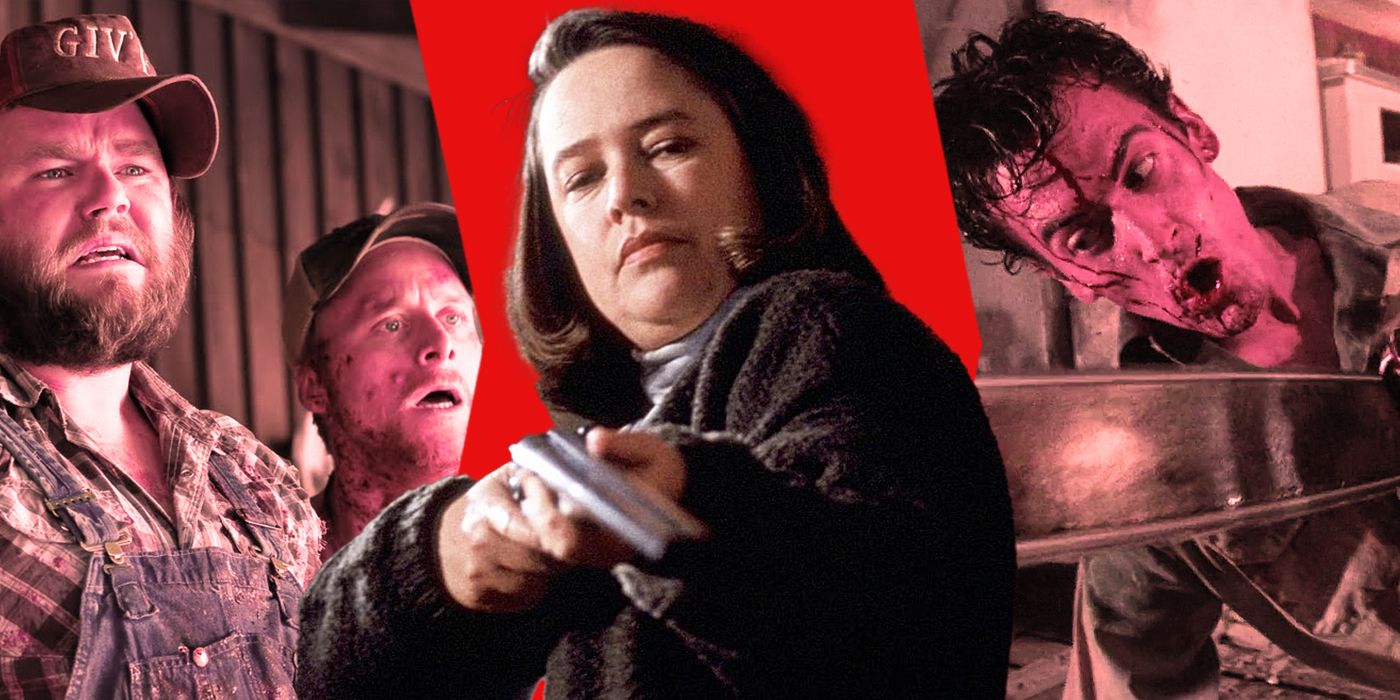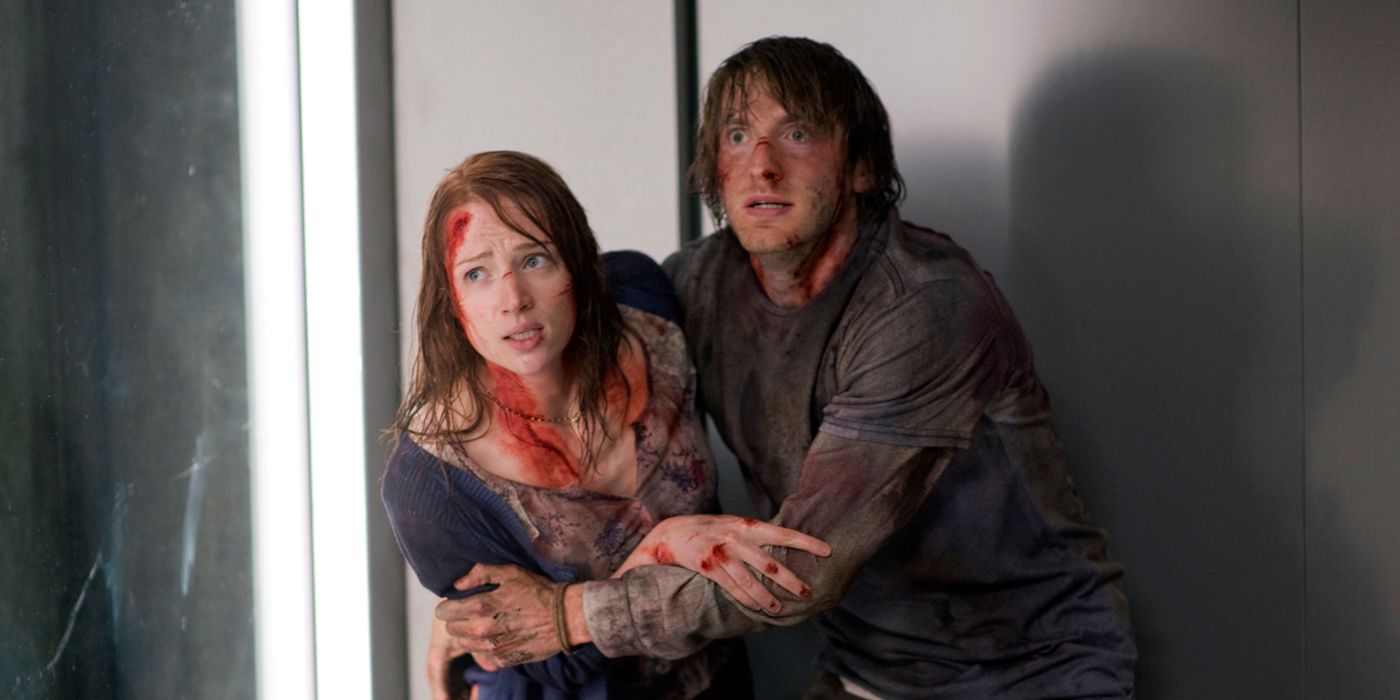The Big Picture
- The Cabin in the Woods subverts the typical horror movie plot, with a surprising twist that no one saw coming.
- The film satirizes horror movie tropes, depicting horror movie monsters as interchangeable and mocking the conventions of the genre.
- The climax of the film serves as a commentary on horror movies as a whole, with the protagonists outwitting the organization but ultimately losing to the monsters.
Director Drew Goddard's 2011 horror/comedy The Cabin in the Woods offered audiences a satirical, self-referential, and tongue-in-cheek take on the standard tropes of the horror genre. Playing on the blended lines between horror and dark comedy, the film -- written by Goddard and Joss Whedon -- presented a fairly run-of-the-mill story punctuated by self-aware send-ups of its own plot and genre. Despite its satirical bent, or perhaps because of it, it has in subsequent years become one of the most memorable horror films of the decade.
The plot of the film, on the surface level, is just about as predictable as any horror movie gets: Five college students fitting the standard horror-film character roles set out in a camper to spend the weekend in a creepy cabin in the woods, blissfully unaware of all the sinister signs that something terrible is about to happen. Gory and terrifying murders of the monstrous and supernatural varieties ensue. Even the name of the film itself is arguably a reference to the cookie-cutter nature of the overdone horror movie tropes it's satirizing, as any of the dozens of such films taking place in a cabin in the woods are brought to mind by the title.
As it turns out, the generic setup of the film's plot is part of the satire itself, and the closer you look, the more things appear not quite what they seemed. The “dumb jock” character has a perfect GPA, the “virgin” is not a virgin, and the “fool” eventually outwits the schemes conspiring on his death. The atypical decisions horror characters make, like splitting up at the first sign of danger, don't occur naturally here, but instead are forced on Cabin's characters by the machinations of an organization based out of a massive underground facility that's manipulating everything. The ensuing narrative, which closely follows pre-set formulas of the horror genre, plays itself out as expected, hitting every point along the way.
Until, suddenly, it doesn’t.

The Cabin in the Woods
Five friends go for a break at a remote cabin, where they get more than they bargained for, discovering the truth behind the cabin in the woods.
- Release Date
- April 13, 2012
- Director
- Drew Goddard
- Cast
- Kristen Connolly , Chris Hemsworth , Anna Hutchison , Fran Kranz , Jesse Williams , Richard Jenkins
- Runtime
- 95 minutes
‘The Cabin in the Woods’ Switches Gears When the Story Moves Underground
The film's formulaic storytelling is subverted right at the moment when it seems to reach its typical conclusion. When one of the members of the film's resurrected zombie family is finishing off the last of the campers and the workers at the underground facility are celebrating their success, the plot is suddenly turned on its head, leading towards a plot twist that nobody saw coming. The film's sharp satirical edge takes center stage as the real climax of the story begins.
As Dana (Kristen Connolly) is being slowly beaten to death by her zombie assailant, the facility workers are thrown into turmoil as they realize that one of the other campers is still alive, botching the as-yet-unexplained ritual the organization was attempting to complete. Marty (Fran Kranz), who previously had been dragged off and presumably murdered in the woods, suddenly returns and saves Dana, short-circuiting the "horror-movie ending" that had been carefully orchestrated from behind the scenes. Marty has discovered the entrance to the elevators used to transport the horror monsters up to the cabin, and he and Dana take the lift down to the unknown depths of the structure below.

12 Best Cabin in the Woods Movies That Aren't 'The Cabin in the Woods'
What's worse than being locked inside a cabin with your family?It's at this point that the satire of the plot becomes extremely apparent. The first thing Dana and Marty come across is a menagerie of all the possible creatures that could have been unleashed on them, from ghosts and zombies to the Sugar Plum Fairy. While it suits the typical jump-scare convention of horror movies, it also serves as part of the commentary on horror films that has been present throughout the movie: the horror movie monsters were really just interchangeable. Plug any of them into the plot, and you'd get essentially the same result.
When Dana and Marty leave the elevator, they are eventually surrounded and cut off by the building security inside some sort of guard station. The organization, in panic mode, desperately tries to kill them both while also making sure that Marty dies first so that they don’t mess up the ritual. From inside the guard station, Dana presses the “system purge” button. This unleashes the horror movie creatures from their confinement and sets them loose in the interior of the facility itself, creating probably the best darkly comedic moment of the entire film.
'The Cabin in the Woods' Becomes a Horror Movie About Horror Movies
As chaos ensues and various workers are ironically dispatched by the monsters they sent to attack the campers, Dana and Marty work their way down into the heart of the building until they find themselves in some sort of ancient stone temple. It's here that the shady machinations of the organization finally come into focus in yet another satirical turn for the film. Sigourney Weaver appears, in the role simply credited as "The Director." Meaning, that within the context of the story, she's the organization's director, but thematically she's standing in for all horror film directors.
She explains that everything that had happened to them and their friends had been part of an elaborate “ritual” of sacrifice to appease a set of ancient evil gods. Her explanation of this “ritual” is a thinly disguised commentary on the horror movie tropes reenacted by countless horror films, including The Cabin in the Woods itself. The organization assembled the typical assortment of horror movie character tropes needed for their ritual -- the Harlot, the Scholar, the Athlete, the Fool, and the Virgin. As the Director helpfully explains, the Harlot must die first and the Virgin last, though that final death is optional. The others can die in whatever order is convenient. This is a sufficient sacrifice to keep the ancient gods from waking up and destroying the world. The entire plot of the film has been set up by the organization to reenact all the tropes that are necessary to complete the ritual, as well as any standard horror movie.
Dana is presented with the option of killing Marty or allowing the world to be wiped out. While she dithers, she and the Director are both attacked by some of the rampaging horror movie monsters. Marty saves Dana again, and the Director plummets down to the fiery depths below, as Dana and Marty decide that humanity isn’t worth saving with such a ritual. They smoke Marty’s last joint as the ground splits open and the massive hand of an angry god erupts from the ground to destroy the world.
Consequently, even in the final moments, after cleverly pointing out the clichés and tropes of standard horror films, the climax of the movie fulfills yet another one of them: the twist ending. Even though the protagonists manage to outwit the organization, the monsters ultimately win, and humanity looks to be doomed as a result.
The Cabin in the Woods is currently streaming on Pluto TV in the U.S.

